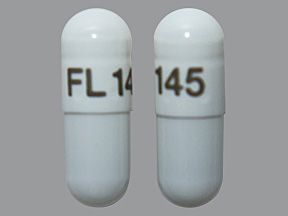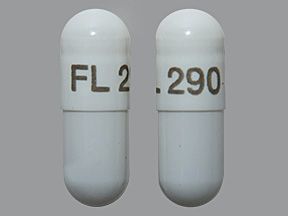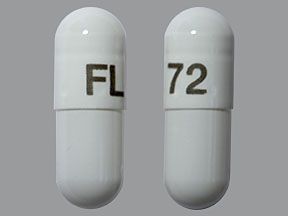Linzess is a prescription drug that’s used to treat certain kinds of constipation. The drug comes as a capsule that you swallow. It’s usually taken once per day.
Linzess is used to treat the following conditions in adults:
- irritable bowel syndrome with constipation (IBS-C)
- chronic idiopathic constipation (CIC), which is constipation without a known cause
The active ingredient in Linzess is linaclotide. (An active ingredient is what makes a drug work.) Linzess comes as a capsule that you swallow. Linzess belongs to a group of drugs known as guanylate cyclase-C agonists.
This article describes the dosages of Linzess, as well as its strengths and how to take it. To learn more about Linzess, see this in-depth article.
Note: This chart highlights the dosages for Linzess, with strengths in micrograms (mcg). Keep reading below for more details.
| Condition | Usual dosage | Other possible dosage |
| IBS-C | 290 mcg taken once daily | none |
| CIC | 145 mcg taken once daily | 72 mcg taken once daily |
Please keep in mind that this article covers the standard dosage schedule of Linzess, which is provided by the drugmaker. But always follow the dosing instructions your doctor prescribes.
See below for details on the dosage of Linzess.
What is the form of Linzess?
Linzess comes as a capsule that you swallow.
What strengths does Linzess come in?
Linzess comes in three strengths: 72 micrograms (mcg), 145 mcg, and 290 mcg.
What are the usual dosages of Linzess?
The recommended dosage depends on which condition is being treated.
The information below describes dosage schedules that are commonly used or recommended. But be sure to follow the dosing directions of your doctor. They’ll determine the best dosage to fit your needs.
Dosage for irritable bowel syndrome with constipation (IBS-C)
The recommended dosage of Linzess for adults with IBS-C is 290 mcg taken once daily. This is also the lowest and highest dose that’s usually prescribed for this condition.
Dosage for chronic idiopathic constipation (CIC)
The recommended dosage of Linzess for adults with CIC is 145 mcg taken once daily. This is the highest dose that’s usually prescribed for this condition.
If your CIC symptoms aren’t severe or you’ve had side effects from the 145-mcg dose, your doctor may prescribe a lower dose of 72 mcg taken once daily.
Is Linzess taken long term?
Yes, Linzess is usually taken as a long-term treatment. If you and your doctor determine that it’s safe and effective for your condition, you’ll likely take it long term. Studies of Linzess looked at taking the drug for up to 18 months.
Below are answers to some commonly asked questions about Linzess’s dosage.
Can I take Linzess twice a day?
No, you should not take Linzess twice per day. This drug is intended to be taken once daily. Taking more than this could raise your risk of side effects.
If you’re concerned that your current dosage isn’t working for you, talk with your doctor.
I have kidney problems. Do I need to take a lower dose of Linzess?
It’s not likely. Linzess is broken down inside the digestive tract, so it should not affect the kidneys. If you have kidney problems, you should be able to take the standard Linzess dosage for your condition. But always take the dosage your doctor recommends.
If you have questions about your current dosage, talk with your doctor.
Linzess comes as a capsule that you swallow. You’ll take it once daily on an empty stomach at least 30 minutes before your first meal of the day. You should swallow the capsules whole. Do not crush or chew the capsules. If you have trouble swallowing capsules, see this article for tips that may help.
You can also open the capsules and mix the beads inside with applesauce or water. Do not crush or chew the beads. Mix Linzess with applesauce or water right before taking each dose. Do not mix doses ahead of time.
If mixing Linzess with applesauce:
- Open a capsule and mix the beads with 1 teaspoon of room-temperature applesauce.
- Swallow the spoonful of applesauce right away and without chewing the beads.
If mixing Linzess with water:
- Open a capsule and mix the beads with 30 milliliters (about 1 ounce) of room-temperature water.
- Gently swirl the mixture for 20 seconds and swallow the mixture right away.
You can also receive Linzess through a nasogastric or gastrostomy feeding tube if needed.* A nasogastric feeding tube is inserted into your nose and goes to your stomach. A gastrostomy feeding tube is inserted into your stomach through your abdomen.
For information on the expiration, storage, and disposal of Linzess, see this article.
* For details on receiving Linzess through a feeding tube, see the drug’s prescribing information, or talk with your doctor.
Accessible drug containers and labels
If you find it hard to read the prescription label on your medication, tell your doctor or pharmacist. Some pharmacies provide medication labels that:
- have large print or use braille
- feature a code you can scan with a smartphone to change the text to audio
Your doctor or pharmacist may be able to recommend pharmacies that offer these accessibility features if your current pharmacy doesn’t.
If you miss a dose of Linzess, skip the missed dose and take your next dose at its regular time the next day. You should not take two doses to make up for the missed dose. Doing so could raise your risk of side effects.
If you need help remembering to take your dose of Linzess on time, try using a medication reminder. This can include setting an alarm or downloading a reminder app on your phone.
Do not take more Linzess than your doctor prescribes, as this can lead to serious side effects.
Symptoms of overdose
Symptoms that may result from an overdose of Linzess include diarrhea.
What to do in case you take too much Linzess
Call your doctor right away if you think you’ve taken too much Linzess. You can also call 800-222-1222 to reach America’s Poison Centers or use its online resource. But if you have severe symptoms, call 911 (or your local emergency number) immediately or go to the nearest emergency room.
The sections above describe the usual dosages of Linzess provided by the drugmaker. If your doctor recommends this drug for you, they’ll prescribe the dosage that’s right for you.
Remember, you should not change your dosage of Linzess without your doctor’s recommendation. Only take Linzess exactly as prescribed. If you have questions or concerns about your current dosage, talk with your doctor.
Here are some examples of questions you may want to ask your doctor:
- Does the Linzess dosage I’m prescribed depend on other medications I’m taking?
- Am I likely to have more side effects if I take a higher dosage of Linzess?
- Will you increase my dosage of Linzess if it’s not working for me?
To learn more about Linzess, see these articles:
To get information on different conditions and tips for improving your health, subscribe to any of Healthline’s newsletters. You may also want to check out the online communities at Bezzy. It’s a place where people with certain conditions can find support and connect with others.
Disclaimer: Healthline has made every effort to make certain that all information is factually correct, comprehensive, and up to date. However, this article should not be used as a substitute for the knowledge and expertise of a licensed healthcare professional. You should always consult your doctor or another healthcare professional before taking any medication. The drug information contained herein is subject to change and is not intended to cover all possible uses, directions, precautions, warnings, drug interactions, allergic reactions, or adverse effects. The absence of warnings or other information for a given drug does not indicate that the drug or drug combination is safe, effective, or appropriate for all patients or all specific uses.













